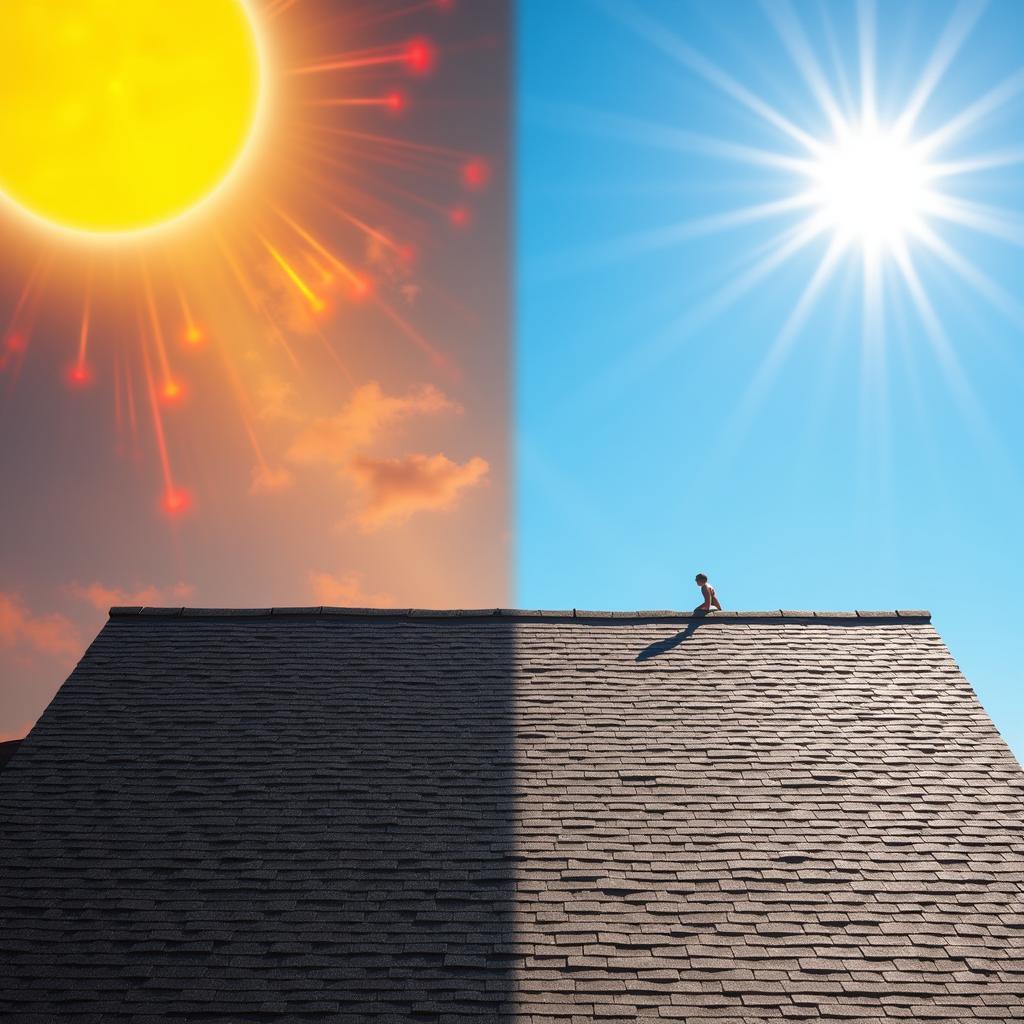Color plays a crucial role in how objects absorb light and heat. Understanding this relationship is essential for making informed decisions about everything from choosing the right paint color for your house to selecting the most efficient solar pool cover. How does color affect heating by absorption of light? Simply put, darker colors absorb more light and heat, while lighter colors reflect more. This principle has wide-ranging implications for energy efficiency, comfort, and even the health of plants.
Picking the right shingle color can significantly impact your home’s temperature, especially during hot summer months. This is because different colors absorb and reflect varying amounts of solar radiation. Similarly, the color of your roof can also influence the temperature inside your home. A dark-colored roof absorbs more heat, potentially increasing cooling costs. You can learn more about the impact of roof color on your home’s temperature here: does roof color affect house temperature.
The Science Behind Light Absorption and Color
When light strikes an object, some of it is absorbed, and some is reflected. The absorbed light is converted into heat energy. The color we perceive is the wavelength of light that is reflected back to our eyes. Darker colors, like black and navy blue, absorb most wavelengths of visible light, resulting in greater heat absorption. Conversely, lighter colors, such as white and pastel shades, reflect most wavelengths, leading to less heat absorption.
How Color Impacts Heating in Different Contexts
The impact of color on heating can be observed in various situations. For example, consider the following:
- Buildings: Dark-colored roofs absorb more heat, leading to higher indoor temperatures. This can necessitate increased use of air conditioning, resulting in higher energy bills. Lighter-colored roofs, on the other hand, reflect more sunlight and keep the building cooler.
- Clothing: Wearing dark-colored clothing on a sunny day will make you feel hotter than wearing light-colored clothing. This is because the dark clothes absorb more sunlight and convert it into heat.
- Cars: Dark-colored cars tend to get hotter in the sun than light-colored cars. This can make the interior uncomfortable and even damage the car’s interior over time.
- Solar Panels: Dark-colored solar panels are more efficient at absorbing sunlight and converting it into electricity.
 Dark Colored Roof Heat Absorption
Dark Colored Roof Heat Absorption
Why is a black car hotter than a white car?
A black car is hotter than a white car because black absorbs all wavelengths of visible light, converting them into heat. White, on the other hand, reflects most wavelengths, resulting in less heat absorption.
Choosing the Right Colors for Your Home
Choosing the right colors for your home can significantly impact its energy efficiency and comfort. Opting for lighter exterior colors can help keep your home cooler in the summer, reducing the need for air conditioning. Learn more about the importance of shingle color by visiting does shingle color matter.
What colors should I avoid for my roof?
Darker colors like black, dark brown, and dark gray should be avoided for roofs, especially in hot climates, as they absorb significant amounts of heat.
The Role of Color in Plant Growth
Color also plays a vital role in plant growth. Chlorophyll, the pigment that gives plants their green color, absorbs light energy for photosynthesis. You might find this article about chlorophyll absorption helpful: what colors do chlorophyll absorb. This process converts light energy into chemical energy, which plants use for growth and development.
Understanding how roof color affects heat can save you money on energy bills. For more information, check out does roof color matter for heat. If you’re looking for the best color for a solar pool cover, we have some great tips for you: what is the best color solar pool cover.
Conclusion
The relationship between color and heat absorption is a fundamental principle of physics with practical implications in everyday life. By understanding how color affects heating by absorption of light, we can make informed decisions about everything from the color of our homes to the clothes we wear. Choosing the right colors can improve energy efficiency, enhance comfort, and even promote plant growth.
FAQ
- Does color affect how much heat an object absorbs? Yes, darker colors absorb more heat than lighter colors.
- Why do dark clothes make you feel hotter? Dark clothes absorb more sunlight and convert it into heat, making you feel warmer.
- What is the best color for a roof in a hot climate? Lighter colors are best for roofs in hot climates as they reflect more sunlight and keep the house cooler.
- How does color affect plant growth? Chlorophyll, the green pigment in plants, absorbs light energy for photosynthesis, which is essential for plant growth.
- What color absorbs the most heat? Black absorbs the most heat as it absorbs almost all wavelengths of visible light.
- Why are white cars cooler than black cars? White cars reflect more sunlight than black cars, which absorb most sunlight and convert it into heat.
- How can understanding color and heat absorption help me save energy? Choosing lighter colors for your home’s exterior can reduce the need for air conditioning, saving energy and money.
Need help with color selection and application for your home? Contact us at Phone: 0373298888, Email: [email protected], or visit us at 86 Cau Giay, Hanoi. We have a 24/7 customer service team ready to assist you.

